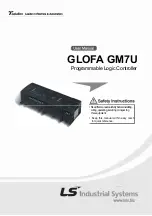
2
RI7FD202
→
DKRCI.PI.ID0.A1.02 / 520H1004
© Danfoss A/S (RC-CMS/MWA), 02-2006
Installation
Refrigerants
Applicable to all common non-flammable
refrigerants, including R717 and non-
corrosive gases/liquids dependent on
sealing material compatability.
Flammable hydrocarbons are not
recommended. The valve is only
recommended for use in closed circuits. For
further information please contact Danfoss.
Temperature range
POV: –50/+150°C (–58/+302°F)
Pressure range
The valves are designed for a max. working
pressure of 40 bar g (580 psi g).
Installation
The POV pilot operated safety valve is used
in conjunction with the BSV back pressure
independent safety valve and is specifically
designed for protecting compressors
against excessive pressure (fig. 5).
See technical leaflet for further installation
instructions.
The valve should be installed with the
spring housing upwards (fig. 1). By
mounting of the valve it is important to
avoid the influence of thermic and dynamic
stress (vibrations).
The valve is designed to withstand a high
internal pressure. However, the piping
system should be designed to avoid liquid
traps and reduce the risk of hydraulic
pressure caused by thermal expansion. It
must be ensured that the valve is protected
from pressure transients like “liquid
hammer” in the system.
Recommended flow direction
The valve should be installed with the flow
towards the valve cone as indicated by the
arrow on fig. 2.
Flow in the opposite direction is not
acceptable.
Welding
The top should be removed before welding
(fig. 3) to prevent damage to the O-rings
between the valve body and top, as well
as the teflon gasket in the valve seat. Do
not use high-speed tools for dismantling
and reassembling. Be sure that grease on
bolts is intact before reassembling. Only
materials and welding methods compatible
with the valve housing material must be
welded to the valve housing. The valve
should be cleaned internally to remove
welding debris on completion of welding
and before the valve is reassembled.
Avoid welding debris and dirt in the
threads of the housing and the top.
Removing the top can be omitted provided
that:
The temperature in the area between the
valve body and top as well as in the area
between the seat and the teflon cone
during welding does not 150°C/
+302°F. This temperature depends on the
welding method as well as on any cooling
of the valve body during the welding itself
(cooling can be ensured by, for example,
wrapping a wet cloth around the valve
body). Make sure that no dirt, welding
debris etc. get into the valve during the
welding procedure.
Be careful not to damage the teflon cone
ring.
The valve housing must be free from
stresses (external loads) after installation.
Assembly
Remove welding debris and any dirt from
pipes and valve body before assembly.
Tightening
Tighten the top with a torque wrench to
the values indicated in the table (fig. 4). Do
not use high-speed tools for dismantling
and reassembling. Be sure that grease on
bolts is intact before reassembling.
Colours and identification
Precise identification of the valve is made
via the ID label on the top, as well as by the
stamping on the valve body. The external
surface of the valve housing must be
prevented against corrosion with a suitable
protective coating after installation and
assembly.
Protection of the ID label when painting
the valve is recommended.
In cases of doubt, please contact Danfoss.
Danfoss accepts no responsibility for
errors and omissions. Danfoss Industrial
Refrigeration reserves the right to make
changes to products and specifications
without prior notice.
ENGLISH






















